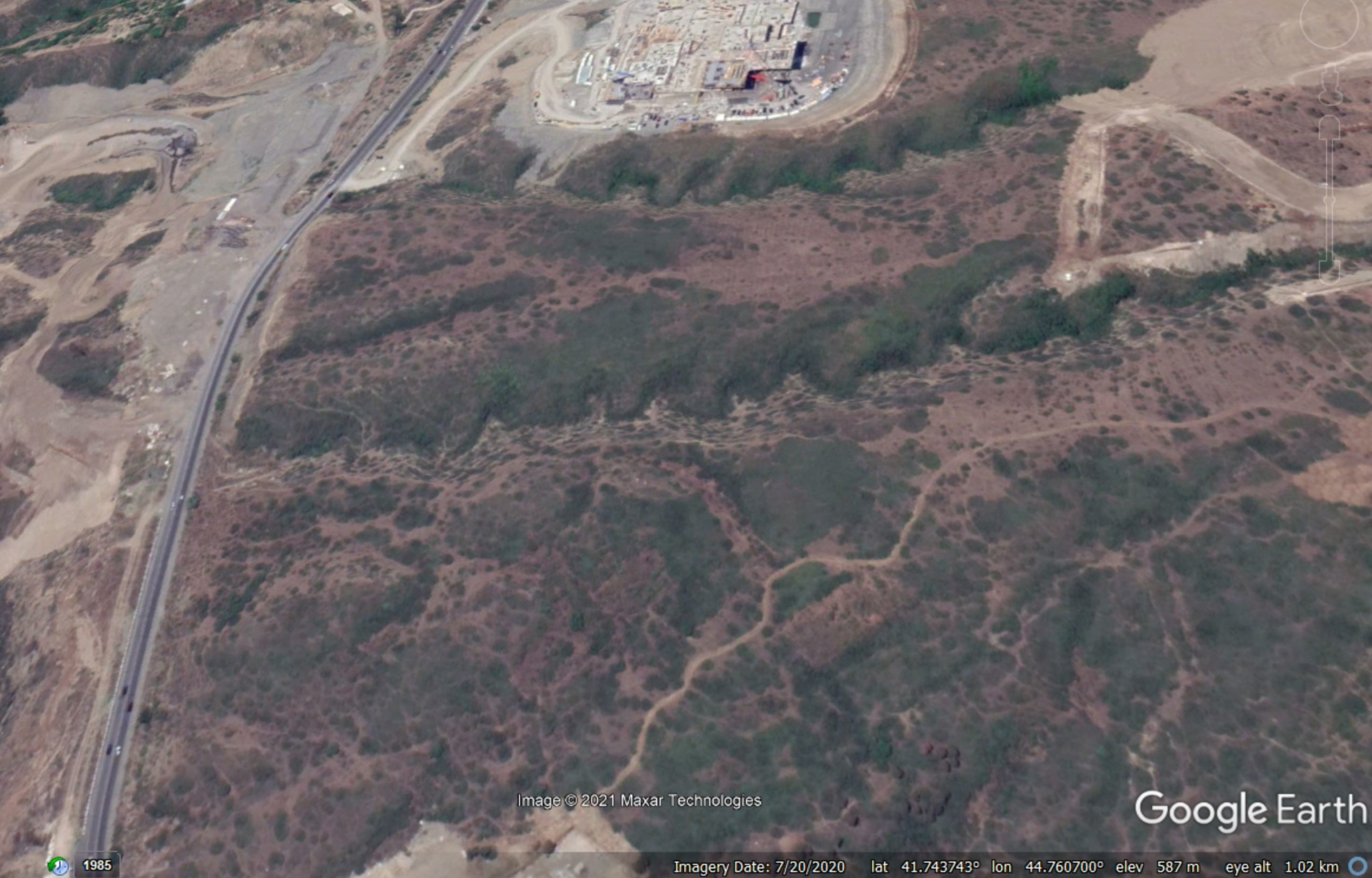19 March 2021
Tbilisi: a 500,000 cubic metre landslide, probably triggered by road construction
Posted by Dave Petley
Tbilisi: a 500,000 cubic metre landslide, probabkly triggered by road construction
In Tblisi in Georgia, a 500,000 cubic metre landslide has developed on the edge of the metropolitan area, probably triggered by construction of a road. The landslide which is described in articles in both Vestnikkavkaza.net and JAM News, is impressive in scale:-

The landslide in Tblisi. Image from JAM.net, originally posted to Forum.ge
.
The image above shows a very large fissure that defines the mobile block. This appears to be sliding towards the left of the image, where the slope has been cut fro road construction. The image below provides a sense of the motion:

The sense of movement of the landslide in Tblisi. Image via JAM.net via Forum.ge
.
The under-excavation road is being protected from minor rockfalls by a barrier of what appears to be concrete blocks. This suggests that the movement has been developing for a few days at least.
The landslide has developed on the margins of a new road linking two residential areas of Tbilisi – Vashlijvri and Nutsubidze. I believe that the Google Earth image below shows the site. This image was taken in July 2020:-

Google Earth image of the site of the landslide in Tblisi
.
The JAM.net article provides some insights from local experts:
“The earth may descend tomorrow, the day after tomorrow, or in a year, but it will definitely come down. Where and how – the issue of modeling, it needs to be assessed,” said Geologist Tea Godoladze, director of the National Center for Seismological Monitoring.
According to her, geologists and surveyors who have already made the initial assessment have come to the conclusion that cracks in the slope are the result of improper intervention in the environment. And, most likely, a landslide cannot be avoided.
The danger exists both in the immediate vicinity of the landslide and in other areas, since the support system is also broken there, said geomorphologist Lasha Sukhishvili.
“The speed of the landslide is still unclear. This can take years. But, for example, due to heavy rain or some vibrations, the process may speed up a little,” said Sukhishvili.
Managing a landslide of this scale will be challenging. I am reminded of the Rattlesnake Ridge landslide, where the pragmatic solution has been simply to allow it to move whilst monitoring it carefully.


 Dave Petley is the Vice-Chancellor of the University of Hull in the United Kingdom. His blog provides commentary and analysis of landslide events occurring worldwide, including the landslides themselves, latest research, and conferences and meetings.
Dave Petley is the Vice-Chancellor of the University of Hull in the United Kingdom. His blog provides commentary and analysis of landslide events occurring worldwide, including the landslides themselves, latest research, and conferences and meetings.
For what it’s worth, there also appears to have been recent brush clearing activities. Although not a dense forest, an evapotranspiration rate drop and attendant higher ground water may also be a contributing factor.
Geologists say:
“Huge masses of earth may collapse on the road connecting the two residential areas.”
“The earth may descend tomorrow, the day after tomorrow, or in a year, but it will definitely come down.”
Could one of the geologists please give a geologic cross section?
Thank you!
Rainer Poisel
Thank you Dr Petley. Very interesting as all your posts. Any information on the strike and dip of the sliding plane or sedimentary layers there? Thank you.